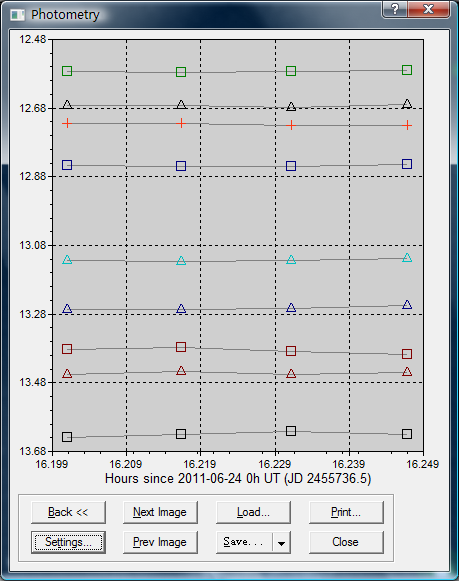 |
| Light Curve Plot MaxIm DL: CV mag Focas II: CR mag |
Result from 2011/07/18 - 2011/07/30
Photometric work with MaxIm DL V5, V-mags of nearby reference stars (source from APASS) are chosen. Checked stars as well were selected in the vicinity with similar magnitudes to the supernova's. The Aperture Radius was set to 6, the Gap Width to 4, and Annulus Thickness to 8.
Plots generated by MaxIm DL:
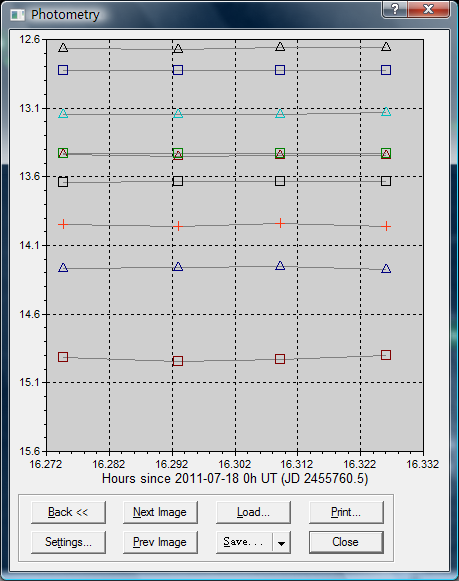 |
 |
 |
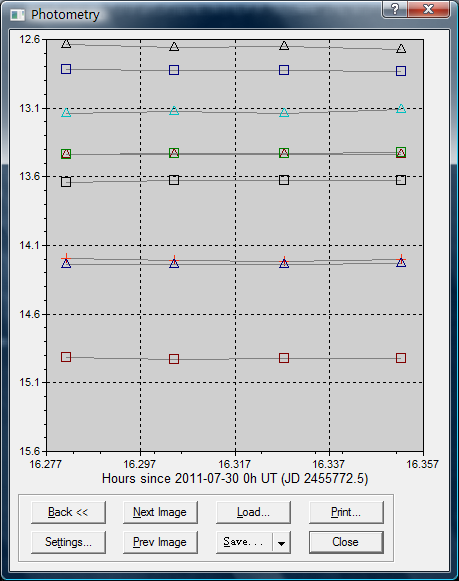 |
The following graph shows the tendency of brightness from Jul 18 to Jul 30:

The stars I used to conduct
photometric work:

The supernova now is experiencing a declination after peaking its culmination in mid June. A temporare increase on Jul 5 or a sudden declination on Jul 4 is seen from the above figure, with which I do not have much certitude to assert that I have recorded its authentic lightcurve itself, in that the weather was not so good during these days. Any interference from nasty weather may well lead to such a distorted consequence. It will make sense once our result is combined with the results from other observers.
Focas II, R band from star catalog CMC-14 is chosen. I measured the magnitudes of the supernova in Astrometrica with an aperture radius selected to 7 prior to working with Focas II:

Results from the stacked images by average from Jul 18 to Jul 30:
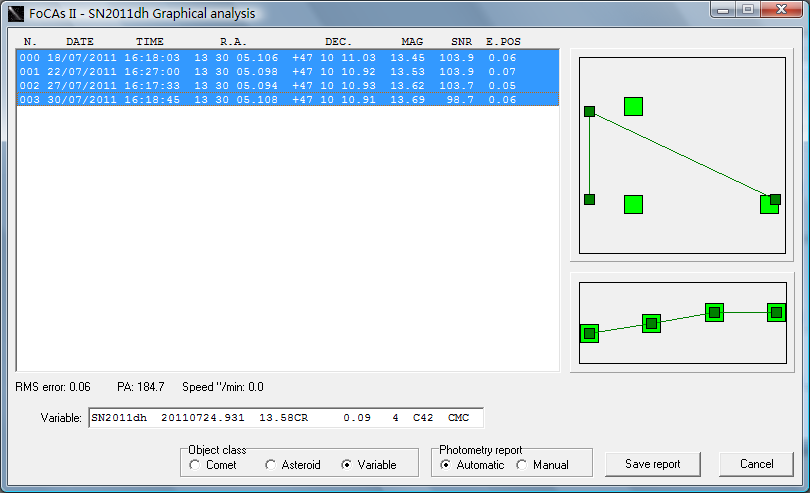
Copyright © Man-To Hui 2011/08/03
Result from 2011/06/24 - 2011/07/08
I attempted photometric work by implementing the photometry function in MaxIm DL V5. I chose the V-mags of nearby reference stars (source from APASS). Checked stars as well were selected in the vicinity with similar magnitudes to the supernova's. The Aperture Radius was set to 7, the Gap Width to 4, and Annulus Thickness to 8.
Plots generated by MaxIm DL.
|
|
|
2011/06/24 |
 |
|
2011/06/25 |
 |
|
2011/06/27 |
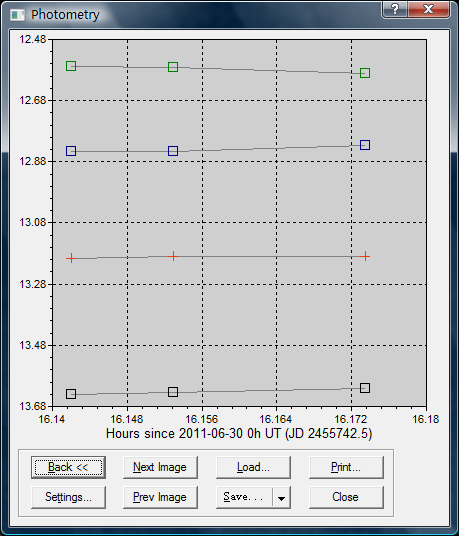 |
|
2011/06/30 |
 |
|
2011/07/03 |
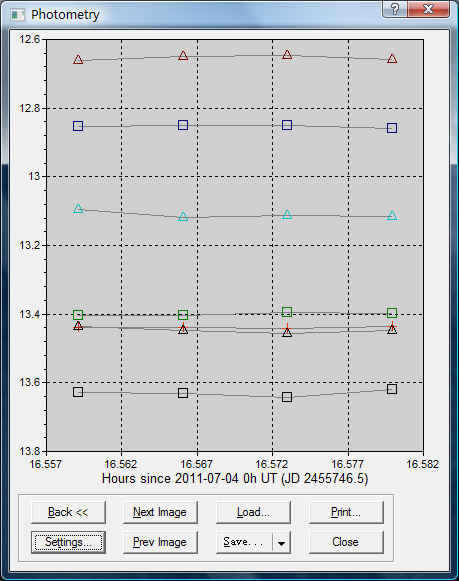 |
|
2011/07/04 |
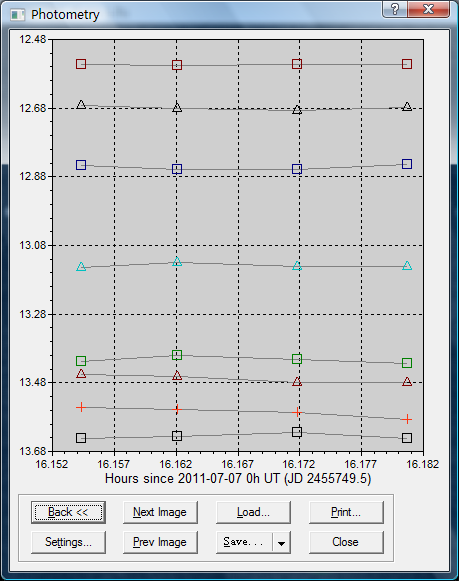 |
|
2011/07/07 |
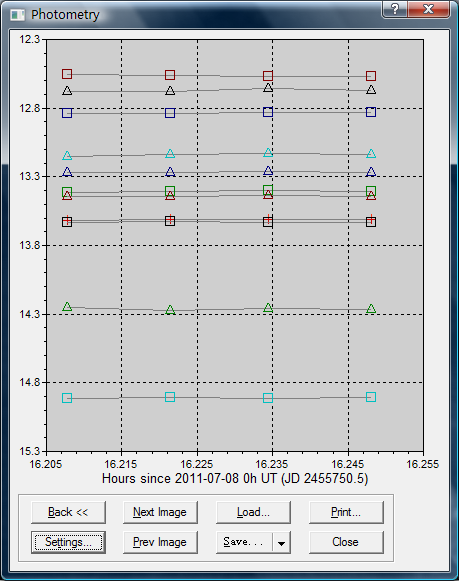 |
|
2011/07/08 |
I re-measured all of the available stacked images from the beginning until thus far by average method in Astrometrica:

The stars I used to conduct
photometric work:
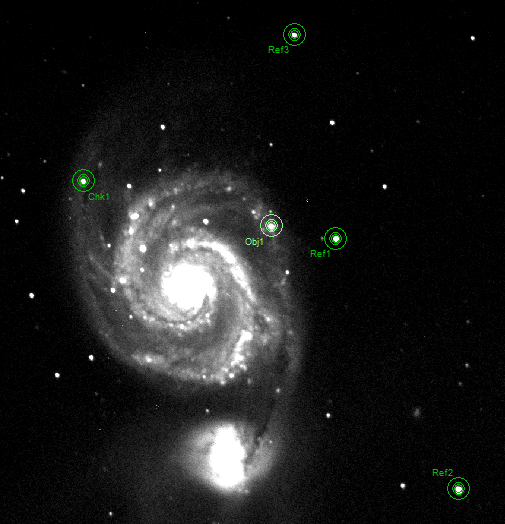
The supernova now is experiencing a declination after peaking its culmination in mid June. A temporare increase on Jul 5 or a sudden declination on Jul 4 is seen from the above figure, with which I do not have much certitude to assert that I have recorded its authentic lightcurve itself, in that the weather was not so good during these days. Any interference from nasty weather may well lead to such a distorted consequence. It will make sense once our result is combined with the results from other observers.
The same work by applying Focas II is presented below with different from which band I selected, here R band from star catalog CMC-14 chosen. I measured the magnitudes of the supernova in Astrometrica with an aperture radius selected to 7 prior to working with Focas II. The date and time are noted in the following figures.
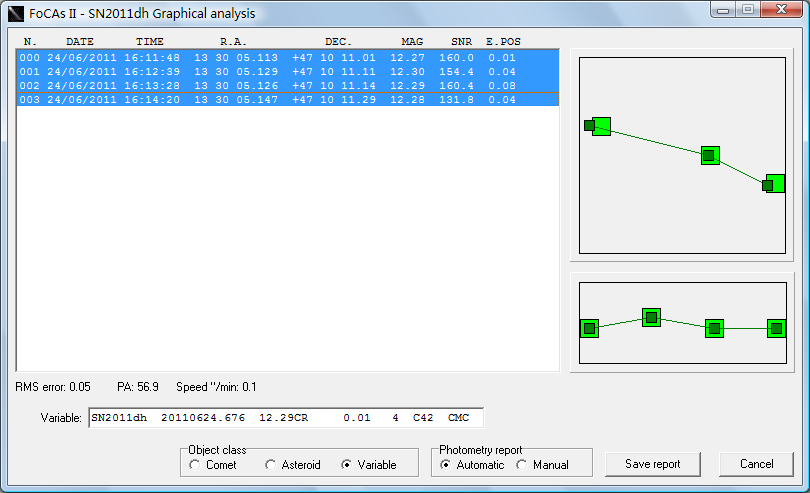
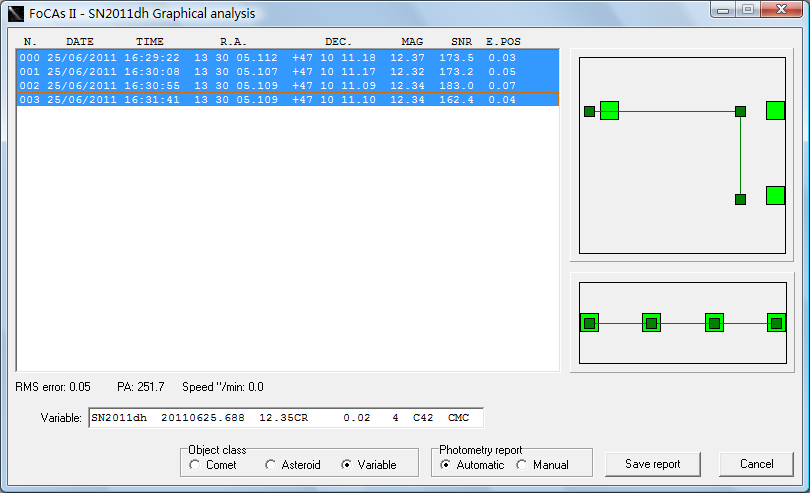
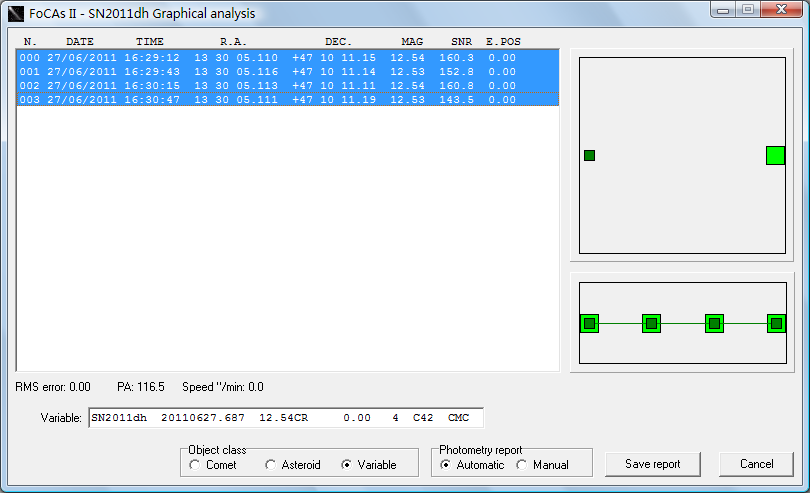
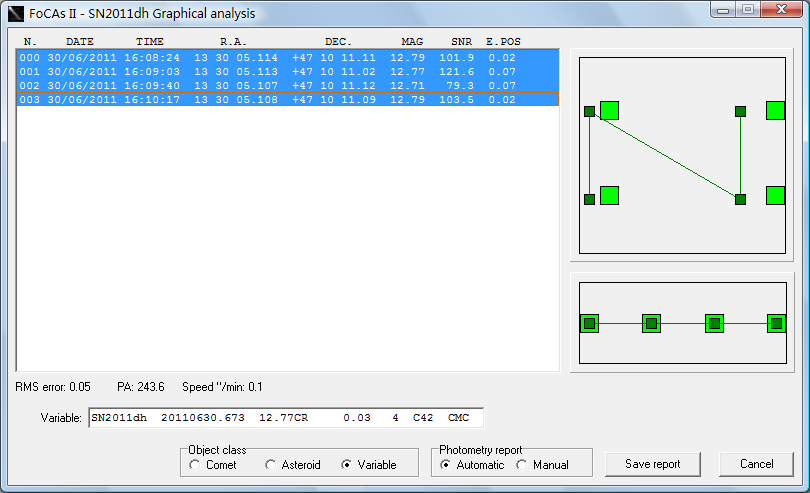
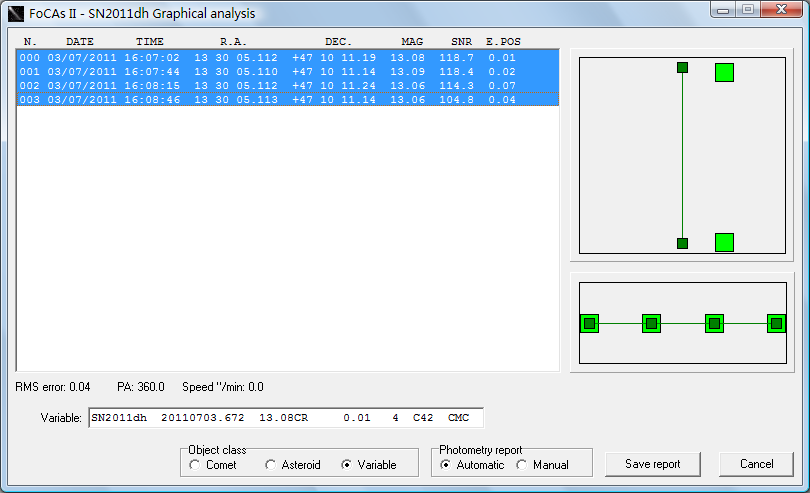
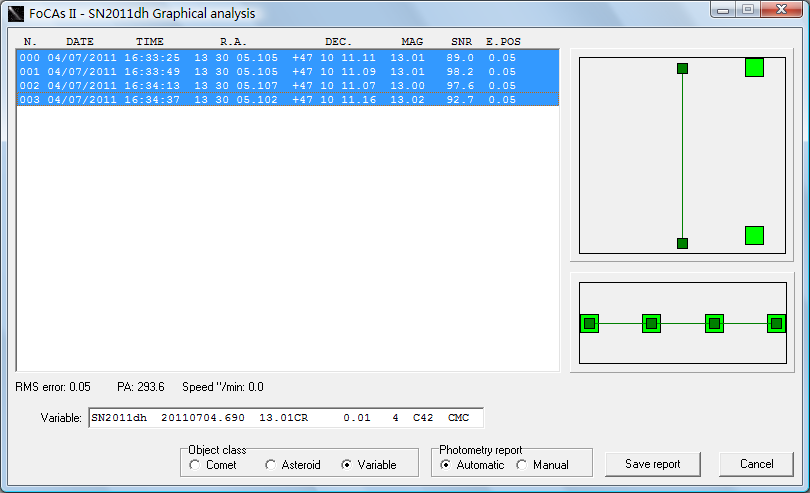
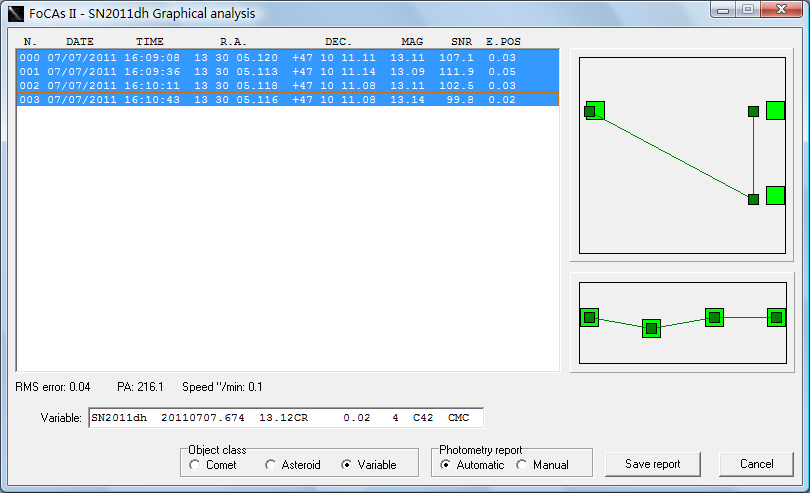
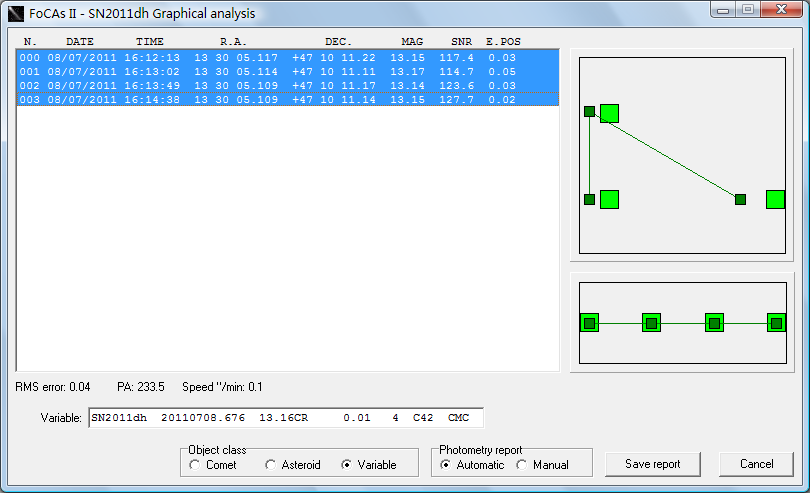
Results from the stacked images by average from Jun 24 to Jul 08:
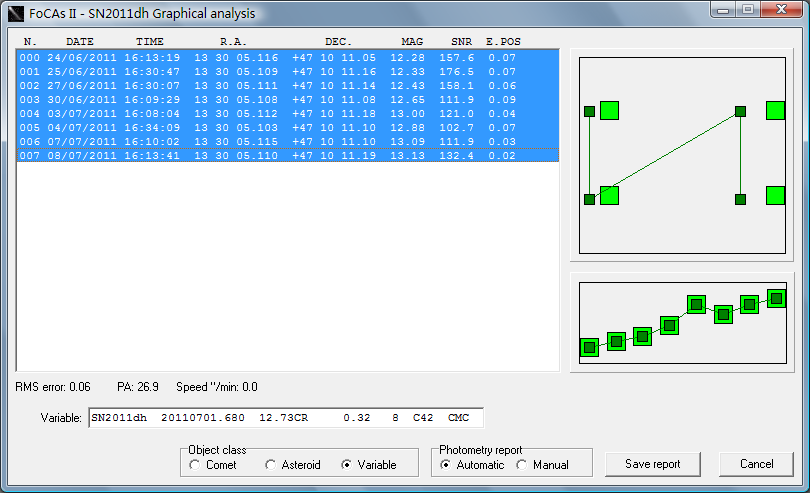
Xingming Observatory C42 in fact has observed the nova also on Jun 23, and Jul 05 and 06, however, the flux was saturated in the first one and the weather conditions severely impacted upon the quality of the images in the latter two and therefore these images were futile.
Copyright © Man-To Hui 2011/07/11
Result from 2011/06/07 - 2011/06/08
I attempted photometric work by implementing the photometry function in MaxIm DL V5. I chose the V-mags of four nearby reference stars (source from APASS) as shown in the following illustration. Three checked stars as well were selected in the vicinity with similar magnitudes to the supernova's. The Aperture Radius was set to 7, the Gap Width to 4, and Annulus Thickness to 8.

Plots generated by MaxIm DL.
 |
|
2011/06/07 |
 |
|
2011/06/08 |
I re-measured all of the available stacked images from the beginning until thus far by average method in Astrometrica:
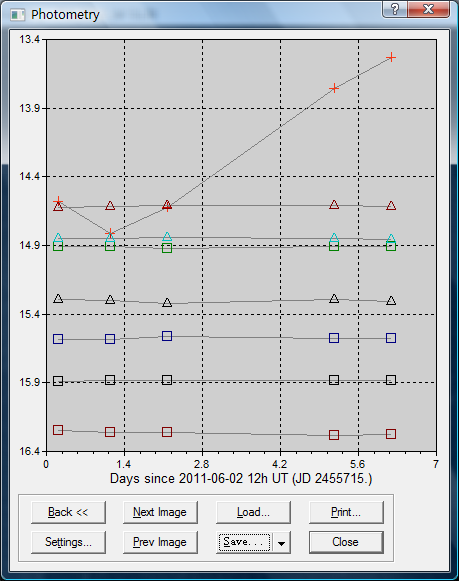
It demonstrates that the magnitude of the nova increases since Jun 03.
The same work by applying Focas II is presented below with different from which band I selected, here R band from star catalog CMC-14 chosen. I measured the magnitudes of the supernova in Astrometrica with an aperture radius selected to 7 prior to working with Focas II. Alas, the last two frames are futile since the nova is almost saturated as the hint in the following figure:
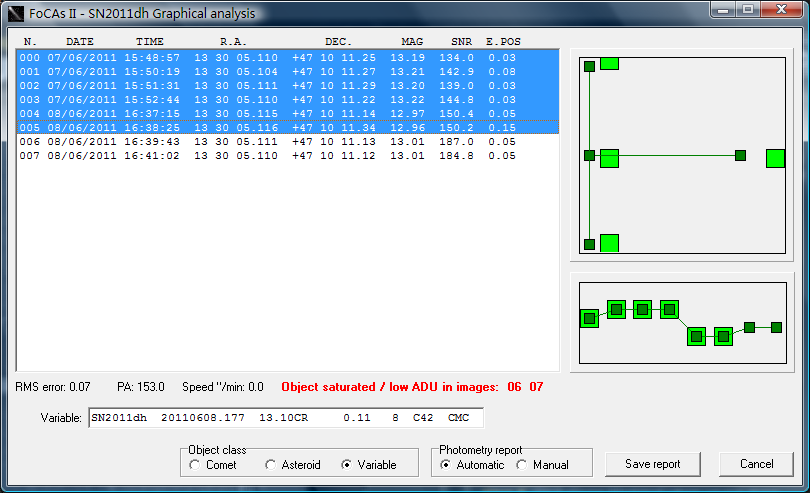
Results from two stacked images by average from two continuous days:

Alas, we Xingming Observatory C42 has observed the nova once again on Jun 11, however, the flux was saturated unconsciously and therefore these images become futile. Weather permitting, we will keep monitoring the supernova in the following months, and photometric work will proceed.
Copyright © Man-To Hui 2011/06/13
Result from 2011/06/02 - 2011/06/04
I attempted photometric work by implementing the photometry function in MaxIm DL V5. I chose the V-mags of four nearby reference stars (source from APASS) as shown in the following illustration. Three checked stars as well were selected in the vicinity with similar magnitudes to the supernova's. The Aperture Radius was set to 7, the Gap Width to 4, and Annulus Thickness to 8.

Thereby I acquired the following plot generated by MaxIm DL.
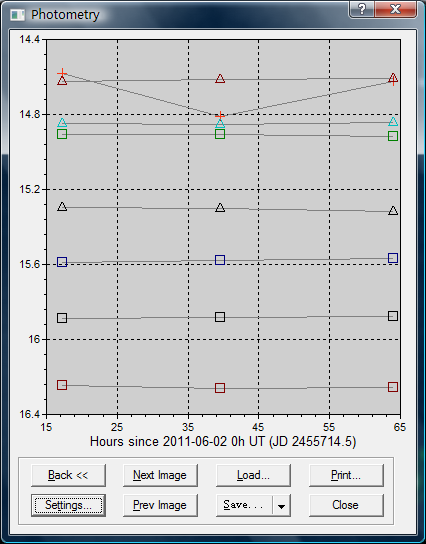
The measured magnitudes of SN 2011dh are symbolized as Pluses, while the magnitudes of the four reference stars and of the three checked stars are represented as squares and triangles respectively.
For curiosity, I also performed the same work by applying Focas II, yet different from which band I selected. Here I was forced to choose R band from star catalog CMC-14 and Focas II would refuse to perform photometric work otherwise. Before working with Focas II, I first measured the magnitudes of the supernova in Astrometrica with an aperture radius selected to 7. Here comes the result:

For comparison, I generated the following plot to show how the magnitudes are distinguished in two different bands from different sources.
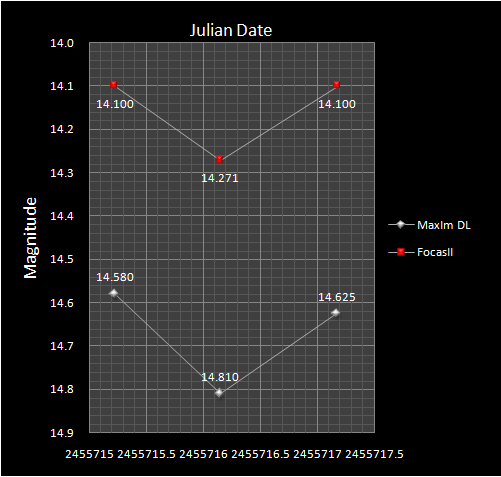 |
I can draw a conclusion that Jun 03 witnesses a drop in the magnitudes in both bands. But I am not certain whether it is an artifact attributed to the way I processed the images, that rather than applying dark frames and flat frames, which were not taken in fact, I calculated a median frame from all the images taken from Jun 02 till Jun 04, which was later divided as a flat field, albeit it was frankly not critic and even coarse in terms of photometry. It is intriguing to investigate whether the drop has really occured due to the supernova itself by comparison to data from other observers. With certitude we Xingming Observatory C42 will keep monitoring the supernova in the following months, and photometric work will proceed.
Copyright © Man-To Hui 2011/06/06
2011/06/02 2011/06/03 2011/06/04 2011/06/07 2011/06/08
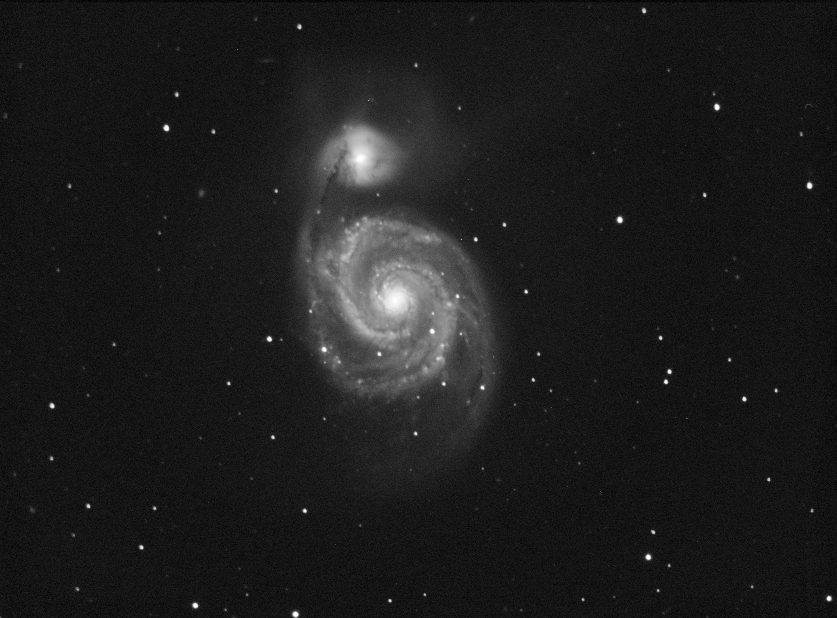 |
| Mouseover to see labels. |
 |
| Mouseover to see labels. |
 |
| Mouseover to see an arrowed
version labeling the supernova. Click the above image to browse a full resolution version. |
 |
| Mouseover to see an arrowed
version labeling the supernova. Click the above image to browse a full resolution version. |
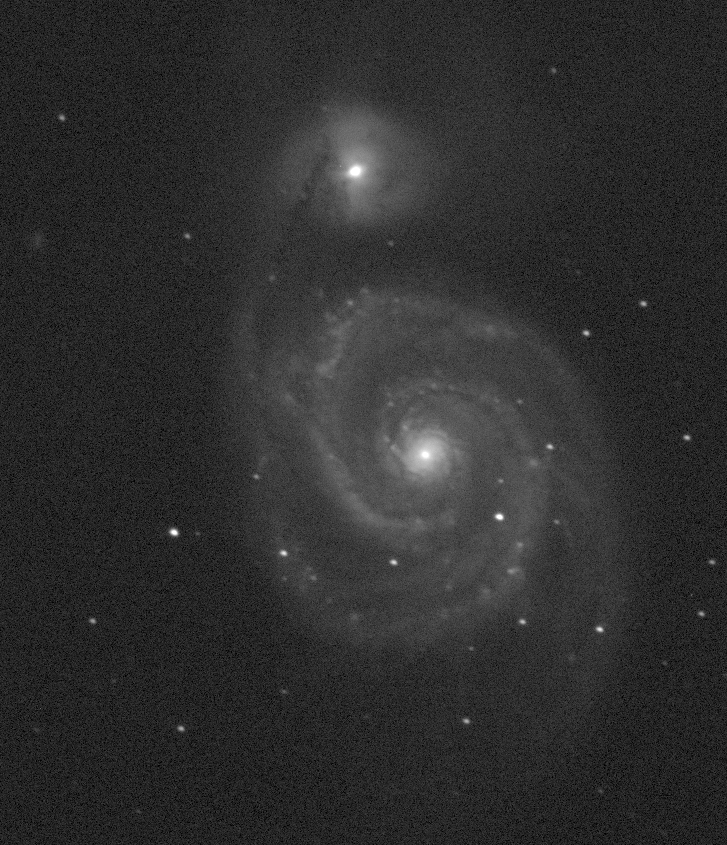 |
| Mouseover to see an arrowed version labeling the supernova. |
Copyright © Man-To Hui
